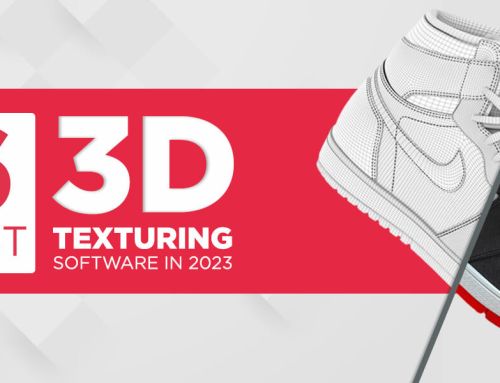PBR texturing is a technique that helps 3D artists make their 3D renders look more realistic. PBR can accurately depict how light interacts with materials compared to other shading and rendering techniques. That is one of the main reasons this technique is growing in popularity.
But what is PBR, and why is it important?
Read ahead to learn everything you need about PBR rendering as a 3D artist.
What does PBR texturing mean?
PBR, short for physically based rendering, is a way to render images by considering how light and shadows interact with materials so that the 3D objects look photorealistic. These PBR materials are stored as individual texture maps that can be used to recreate realistic materials in 3D space.
Put simply, PBR texturing is a technique that simulates how light, and shadows interact with 3D objects in a natural environment. It helps artists create good-looking, photorealistic 3D models. Unlike previous rendering techniques, PBR works on the understanding that all things in the real world are “shiny.”
A point to be noted here is that this technique is based on the laws of physics. Whether or not you use high physical accuracy with math depends on the 3D art you are making. Many 3D artists just want to make the 3D objects look photorealistic to the extent that they look good to the human eye. They don’t focus too much on the mathematical accuracy of how light reflects or refracts when it hits the surface.
Note: PBR material is a collection of individual PBR textures. However, when 3D artists say PBR texture, they usually refer to the whole material. So, we will use the terms PBR textures and PBR materials interchangeably in this article. We will use the term texture map to refer to individual textures.
How are PBR textures made?
PBR textures or materials are made based on the laws of physics, as they must appear realistic. There are two main ways to create PBR materials- image-based and procedural generation.
-
Image-based
Here, a single image or multiple overlapping photos of an object or surface are taken and put through software to extract texture maps. When combined, these maps give the material a realistic look. The most common texture maps used to create PBR materials are diffuse, roughness, and normal maps.
-
Procedural generation
Here, textures are generated using mathematical algorithms. You can use different parameters and inputs to create numerous textures, each with a complex pattern and effects. As algorithms make them, these textures are highly customizable, offer infinite zoom, and don’t require too much storage.
Types of PBR texture maps
3D artists use many different maps to achieve a myriad of effects. Here are some of the commonly used texture maps:
What are the benefits of using PBR texturing?
Recently, PBR texturing has become popular, especially in the gaming and film industries. Let’s look at a few main reasons why many 3D artists prefer PBR textures.
- Easy to use
It is one of the most user-friendly rendering techniques, as you can use a single texture to represent any material accurately. It makes real-time rendering easier, which is why it is popular in game design. - Better shading quality
PBR offers more shading quality than shaders, improving the quality of the final 3D object. Shaders don’t always accurately represent material behavior in some lighting conditions. They can sometimes result in a higher energy return than the lighting they receive.With PBR, the light energy is split between diffusing and reflecting elements, behaving more realistically. It gives the 3D objects a more natural look and performs realistically under various lighting conditions. - Saves time
This technique simplifies much of the work needed to make 3D objects look more realistic. Not only that, it also produces accurate results, so you don’t have to spend time tinkering with different values to get the desired results. It allows 3D artists to devote more time to other processes like lighting, animation, etc. - Enhances realism
This technique lets you create materials that realistically mimic the real-world interactions between light, shadows, and objects. It allows 3D artists to generate photorealistic renders of 3D models, scenes, etc.So far, this technique is the best at representing real-world scenarios for real-time rendering, which is why it is a popular choice for rendering video games. - Cross-platform compatibility
They easily integrate into general physically-based rendering workflows as they are also physically based. You can export your PBR textures to other rendering engines, and they will create the same effects, allowing your work to be consistent. - Greater control
PBR textures allow 3D artists to mix and match various texture maps and adjust their individual intensities to get the desired result. It gives you greater control to get a more accurate final output.
Wrapping up!
PBR texturing deals with the physics of light. It can create realistic lighting environments and better replicate how light interacts with a surface. It helps add an element of realism and makes games and movies look much better. That is why this technique has taken the gaming and movie industries by storm in the past few years.
We hope this article has helped you understand and appreciate this fantastic technique.

